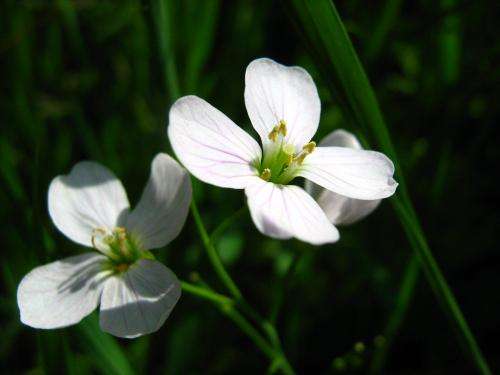Two-spray strategy outmanoeuvres crop weed

A strategy that applies herbicides to crops at two different times has been found to effectively combat weeds including wild radish (Raphanus raphanistrum) in northern Wheatbelt crops.
Consulting agronomist Grant Thompson says that after decades of spraying, the weeds are becoming locally resistant to certain herbicides.
"In our worst cases we [have] got populations that are showing resistance to three or four different herbicide groups in the one individual plant," he says.
He says it is important for farmers to know their own paddock's resistance status, which will then inform their best mode of action for success.
"We had a little consulting group," he says.
"We put together a list of the trial protocols to make sure that we all had a say in what work needed to be done, what treatments needed to be tested."
The group, known as Regional Cropping Solutions Network (RCSN), wished to provide a best-practice management guide to growers dealing with Multiple Herbicide Group Resistant Radish.
They also designed the research to test or support previous findings that herbicide choice is not only important, but demonstrate that timing, application volumes and weed size are important in achieving weed control.
They designed a series of experimental sprayings with trials at three individual farms in the Northampton, Mingenew and South Yuna districts in the Mid West.
Informed by herbicide resistance observations already made at each property, they made trial sprayings of four treatments (three herbicides and a nil control) in randomised trial plots within existing paddocks.
This was done when the wheat was at the two-leaf stage.
"Three weeks later we came back and sprayed at right angles over the top of all of those early treatments with that second spray," Mr Thompson says.
"So we had a matrix basically of four early sprays overlapped by 13 late sprays which gave us all our treatments, combinations, and it was all replicated three times.
"We ended up with about 56 treatments replicated three times."
He says two of the early sprays worked well, and most of the 13 late sprays were very effective.
"We identified plenty of combinations that will work…and highlighted some that produced slightly better grain yields, or preserved grain yields better than others."
"Herbicide-resistant wild radish can be controlled well by a range of herbicides if applied early when weeds are small.
"A two-spray strategy has proven to very effective at controlling wild radish, particularly when the first spray is effective and is done as early as possible on small weeds."
More information: Thompson, G (2014): "Controlling Herbicide Resistant Radish with Herbicides in the Northern Agricultural Region of WA with a two spray strategy" is published privately by the Grains Research and Development Corporation
Provided by Science Network WA
















